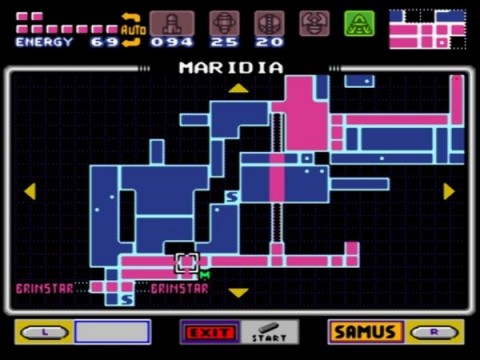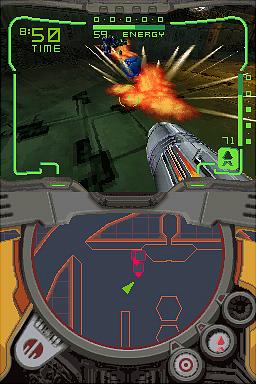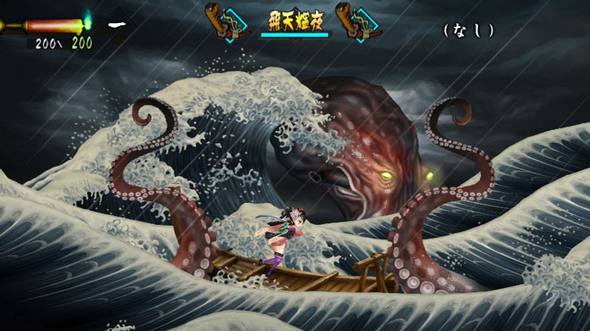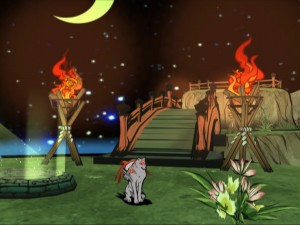![]()
The case has been made (on numerous occasions) that backtracking is often nothing more than a frustratingly lazy way to design a game. It’s a cheap way of extending gameplay time without actually increasing gameplay content, and most games have been heavily criticised if they involve even the slightest hint of having to retrace your steps once or twice.
You know the drill– you reach a door in Metroid Prime you can’t open, or there’s a boulder blocking your path in Zelda II: The Adventure of Link. You need to find an item, a magic spell or particular weapon to let you progress, but the only way to get said item and return to your current impass is to turn on your heels, seek out its location (usually on the other side of the map) and then trek all the way back to the door/ledge/blocked path you couldn’t pass before.
Yet there are some games where backtracking is the bread and butter of the gameplay experience– and fans love it (with good reason too)! To give just two examples, Metroid and Castlevania have become so iconic in the backtracking sphere that they’ve even spawned their own genre: the “Metroidvania.”

If maps like this get your juices flowing, then you belong to a very select group of people (including most of the Nintendojo staff).
But I have a problem with backtracking. Sometimes I think it’s the pinnacle of game design. When everything links together so perfectly with such graceful elegance, it’s times like this when I wish all games were Metroidvanias. But there are other times when I’m practically screaming at the screen for a decent map or a shortcut or just something to make this aimless wandering disappear.
So why am I so so fickle when it comes to this alleged crime against game design?
Firstly, there’s the obvious issue about game progression. When you’re constantly thinking about things you might have missed or areas you need to come back to later, it can sometimes feel like you’re making no headway at all. Secondly, the number of restricted areas in most Metroidvanias actually makes their so-called “open” worlds feel quite closed and narrow. Thirdly, the mental acrobatics required for remembering precisely where those locked doors are can sometimes be just a little too much.
 In some cases, backtracking has even caused me to cease playing altogether. This is precisely why I didn’t end up completing Metroid Prime: Hunters for DS until last year. Early on in the game I got completely lost with its four different planet structure, and I couldn’t remember which door was on each planet. I was also severely lacking in the energy tank department, so any attempts at probing deeper into each planet were often cut short prematurely. So I set it aside for a while in favour of something else, and it inevitably dropped to the bottom of my DS ‘To Do List.’
In some cases, backtracking has even caused me to cease playing altogether. This is precisely why I didn’t end up completing Metroid Prime: Hunters for DS until last year. Early on in the game I got completely lost with its four different planet structure, and I couldn’t remember which door was on each planet. I was also severely lacking in the energy tank department, so any attempts at probing deeper into each planet were often cut short prematurely. So I set it aside for a while in favour of something else, and it inevitably dropped to the bottom of my DS ‘To Do List.’
Similarly, trying to come back to a game after this kind of experience can be just as bewildering– questions like, “Where am I?”, “What was I doing?” and “Where am I meant to be going?” abound and they’re just as likely to put you off again than intice you back into the fold. Much like Metroid Prime: Hunters, I’ve also struggled to complete the original Metroid because I never seem to have enough time to sit down and play it all in one go. I’m determined to try and finish it the old-school way by attempting to hold all the information in my head and not look at a map off the internet, but needless to say I’ve tried many times and failed due to the extended breaks I’ve taken, and my efforts have often resulted in a reluctant reset.
But aside from the general lack of direction and my ever-decreasing memory capacity, another criticism levied at some Metroidvania-style games is that they simply don’t do anything different on your return journey.
For example, while we at Nintendojo loved Muramasa: The Demon Blade, its beauty and fast-paced action only carried the game so far.

The boss fights were the highlight of the entire game– the fury of a giant squid was child’s play compared to some of the other foes you had to face.
The over-arching concept of different blades equals different keys was bound to involve backtracking to some extent, but when that backtracking meant traversing “virtually empty lands and running around areas you’ve already beaten when going back to towns for supplies”, utterly devoid of the exciting and sublime combat they experienced the first time round, it made the experience somewhat “tedious”, with the reward from any exploration “hardly worth the effort”.
Yet backtracking in Metroid Prime mangages to completely avoid this type of lonely tumble-weed feeling by constantly keeping you on your toes with newer, stronger enemies. Even after all these years I’m still surprised when I’m unexpectedly ambushed by a group of space pirates who weren’t native to that area before, and it’s this kind of evolution in difficulty which makes the Prime series particularly stand out in my estimation of the Metroid franchise.
A lot has to be said about the game’s clever placement of elevators as well, creating those much desired shortcuts later on. Likewise, your new power-ups often cut down on backtracking even further when you revisit an area, such as Super Metroid‘s Speed Booster or Prime‘s Hi-Jump Boots.
 Even so, sometimes I find emptiness to be a good thing. I have no scruples whatsoever about backtracking through some of Ōkami‘s sparsely populated environments when I have to get back to the opposite end of the map– sometimes it’s just nice to take in the scenery for a change! So why isn’t that the same for the equally beautiful and visually stunning Muramasa? I think the main reason comes down to how Ōkami gives the player a choice– they can warp across the map or they can take in the relatively brief journey at their leisure. Unfortunately Muramasa wasn’t quite so generous.
Even so, sometimes I find emptiness to be a good thing. I have no scruples whatsoever about backtracking through some of Ōkami‘s sparsely populated environments when I have to get back to the opposite end of the map– sometimes it’s just nice to take in the scenery for a change! So why isn’t that the same for the equally beautiful and visually stunning Muramasa? I think the main reason comes down to how Ōkami gives the player a choice– they can warp across the map or they can take in the relatively brief journey at their leisure. Unfortunately Muramasa wasn’t quite so generous.
I realise it might be unfair to compare 2D side-scrollers with 3D adventure games, but I think the point still stands– without something to make that second journey different, it really is nothing more than lazy level design when developers force players to revisit the same environments time after time. When many games have shown that backtracking can be disguised very simply by providing something like an alternative route or shortcut for players to explore, there’s no reason for to be subject audiences to the tedium of running back through empty rooms. Why would you willingly let the pace ground to a halt and risk having any enjoyment you might have garnered falling into frustration? The way I see it, new abilities should be used to unlock both new areas and new paths along the way, thereby increasing content in line with the extension of gameplay time. Legible maps also help.
So here’s to the hope that backtracking will continue to remain on my good side. Done right and this infernal method of game design can be both a great aid to players and an excellent way of facilitating that sense of immersion in a game’s environment. Get it wrong though and it’s probably the single most likely factor to make us give up and stop playing. Games which present me with a set of choices are always a good thing in my books, and Metroidvanias are no exception.




 ShareThis
ShareThis







I have no sense of direction and very little short-term memory for things like places. I have tried a few Metroidvania games and always had to give up, completely lost. Even walkthroughs don’t help.
They’re definitely an acquired taste, and some games use backtracking far better than others. Sometimes I think walkthoughs can be even more confusing though – which games have you tried?
Great article!
One facet of backtracking that makes it attractive to me is that these games usually have plenty of items and secrets that can be “missed”, but found later. In something more linear (Final Fantasy games spring to mind) there might be all kinds of little interesting things that can be missed, with no way to ever get back and find them short of starting the whole game over.
I have just enough OCD/completionist in me that I find comfort knowing I can always come back and find all the extra stuff later. Prime 3 was even kind enough to warn me near the end that its openness was about to change and there would be no going back.
Thanks! :)
Yes, that’s precisely why I like backtracking so much as well (when it does it right!). I think the main issue with, say, Final Fantasy games, is that you often have to go out of your way to find those secrets. I’m not saying that’s a bad thing– I love Final Fantasy, but the onus is very much on you the player to go and find them rather than the game ear-marking them for you saying “come back to me later!” In the end they accomplish the same thing most of the time– I’ve noticed that more and more games have a “point of no return” notice these days– it’s just a different way of getting there.